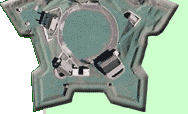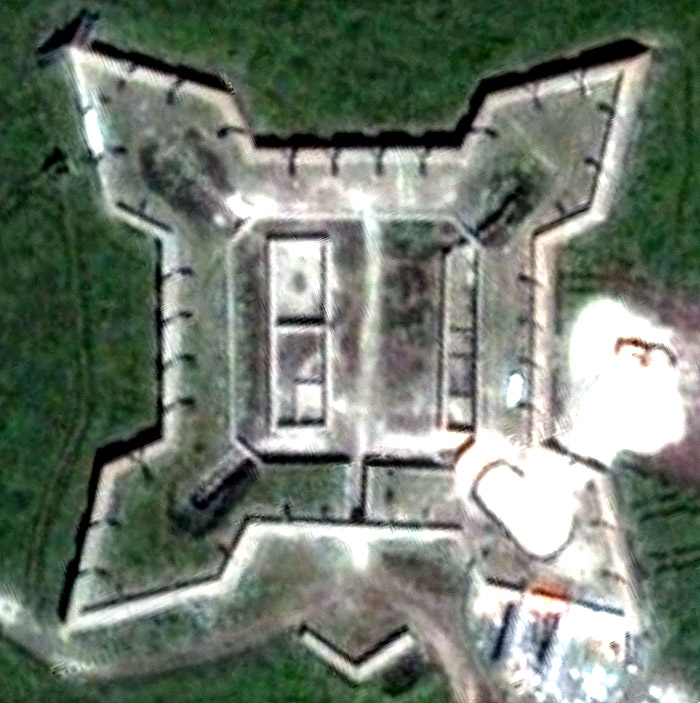
 |
 |
Prince of Wales Fort Churchill, Manitoba |
 |
 |
 |
 |
 |
||
 |
In 1610, English explorer Henry Hudson, searching for the Northwest Passage, sailed around Greenland in his ship Discovery and found what he named Hudson Bay, in Canada. His ship was trapped in ice over the winter, and once it was freed he announced that he would like to continue exploring his bay: The crew mutinied in June of 1611, shoved him and a few others into a little boat which was set adrift, and the Discovery sailed home. Henry Hudson was never heard from again. Excited by word of Hudson's find and its notional uses for trade and settlement, the company known as The Governor and Company of Adventurers of England trading into Hudson's Bay was formed in 1670: Fortunately, the name was soon shortened to the Hudson's Bay Company. The Company, granted exclusive trading rights in Rupert's Land by the British Crown, was to eventually become the ruling authority in up to 15% of North America before the advent of European-based colonies and states. France naturally disliked this concept and sent numerous military expeditions into the region to challenge the Company, but officially gave up any claim to Rupert's Land in the Treaty of Utrecht (1713), which somewhat ended the War of Spanish Succession (1701-1714). Elements of the Hudson's Bay Company first sailed into the Churchill River in 1686, trading in furs with the Cree Indians. The region apparently became worth defending in 1717, when Churchill River Post, a stockade made of timber, was built 8 kilometers from the mouth of the river. In 1719 the post was renamed Prince of Wales Fort. Concerned with French attack by sea, the Company began work on the current stone fort, further up the river at Eskimo Point, in 1739. Conditions in Prince of Wales Fort were harsh. It took four cartloads of wood to heat the living quarters for one day during the winter, so much of the fort's garrison spent a majority of their time chopping down trees! The daily struggle just to survive, while still trading with the locals and sending furs back to England on a regular basis, lengthened the fort's construction period until 1771. In 1782, three French ships with about 300 men sailed towards Prince of Wales Fort in a menacing fashion. The Fort's commander Samuel Hearne (1745-1792), whose claim to fame was as the first European to make the trek north across Canada to the Arctic Ocean, realized that the 39 men who were manning the fort would likely not fare well against the French and immediately surrendered. Hearne and 32 of his men were permitted to sail back to England, and the French blew up the fort's buildings and spiked its guns. Hearne returned to the fort the following year, but found it unuseable, a state in which it remained until 1934. The fort was recognized as a location of national significance in 1920, but it wasn't until the railroad reached Churchill in 1929 that enough of a workforce could be assembled to get a reconstructive effort under way. Prince of Wales Fort's cannon were dug up and remounted, and the walls and buildings were repaired. Today Prince of Wales Fort is said to be "one of the main tourist attractions in Churchill," though looking at the satellite imagery, I would imagine it's the only tourist attraction in Churchill. The Hudson's Bay Company, meanwhile, is the oldest commercial corporation in North America. It still operates a series of department stores throughout northern Canada, as well as the upscale Lord & Taylor chain in the US. |
 |
 |
||
|
|
|||||||
Info Source
Info Source 2
Info Source 3
Info Source 4 Info Source 5 Info Source 6 Info Source 7 Thanks to Google Maps for the image! ©2010 starforts.com |
 |